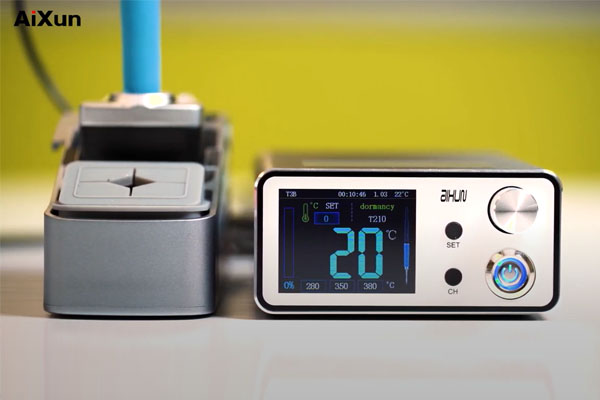
Hand soldering is a crucial process in electronics manufacturing and repair, requiring precision and skill. Whether you assemble circuit boards or make repairs on delicate components, it's important to follow proper soldering techniques for reliable and durable connections. Unfortunately, many people involved in hand soldering operations make common mistakes that can lead to subpar results, compromised functionality, and costly rework. In this article, we will explore these mistakes and provide insights on how to avoid them, ultimately improving the quality and reliability of your soldering work.
One of the main reasons for substandard hand soldering results is the lack of proper training. Soldering is a specialized skill that requires knowledge of various techniques, tools, and materials. Without adequate training, individuals may not understand the correct procedures or the importance of critical factors such as temperature control, solder flow, and joint inspection. This lack of knowledge and experience can lead to inconsistent soldering quality and an increased risk of component damage.
To address this issue, it's crucial to invest in comprehensive training programs for individuals involved in hand soldering operations. Training should cover essential topics such as soldering techniques, safety precautions, temperature control, and the proper use of soldering equipment. By providing employees with the necessary knowledge and skills, organizations can significantly improve the quality and efficiency of their hand soldering operations.
Temperature control is a critical aspect of successful hand soldering. Incorrect temperature settings can have detrimental effects on solder joints and components. If the temperature is too low, the solder may not melt properly, leading to weak or incomplete connections. Conversely, if the temperature is too high, it can cause thermal damage to the components, including solder pads, integrated circuits, and other sensitive parts.
To prevent these issues, it's essential to set the right temperature for different components and soldering tasks. Generally, a soldering iron temperature between 300°C and 350°C (572°F to 662°F) is suitable for most through-hole soldering operations. However, temperature requirements may vary depending on the specific solder alloy, flux, and component being soldered. It's crucial to consult the manufacturer's guidelines or datasheets for recommended temperature ranges. Using temperature-controlled soldering stations or irons with adjustable settings can also help maintain consistent and accurate temperatures throughout the soldering process.

Achieving high-quality solder joints goes beyond temperature control. Poor soldering technique can lead to weak connections, cold solder joints, solder bridges, and other issues that compromise the reliability of the soldered joints. Some common mistakes in soldering technique include:
Insufficient heat transfer: Inadequate heating can result in incomplete melting of solder, leading to weak bonds. It's essential to ensure sufficient heat transfer from the soldering iron to the joint, allowing the solder to flow and create a solid connection.
Excessive solder application: Applying too much solder can lead to solder bridges where excess solder forms unintended connections between adjacent components or pads. It's crucial to use the right amount of solder for each joint, ensuring a clean and reliable connection.
Poor solder joint formation: A properly formed solder joint should have a smooth, shiny appearance and a conical shape. Common mistakes include "cold solder joints" with a dull or grainy appearance, indicating insufficient heat or improper solder flow. It's important to maintain steady heat and apply solder directly to the joint, allowing it to flow and create a strong bond.
To achieve high-quality solder joints, it's advisable to follow best practices such as cleaning the surfaces to be soldered, using flux to promote solder flow and wetting, and ensuring proper alignment and stability of components during soldering. Practice, patience, and attention to detail are essential for honing soldering skills and improving overall technique.
Inspection and quality control play a vital role in hand soldering operations. Failing to inspect solder joints thoroughly can result in undetected defects that may lead to intermittent connections, premature failures, or circuit malfunctions. Additionally, inadequate quality control measures can allow flawed products to pass through the production process, increasing the risk of customer dissatisfaction and costly rework or recalls.
To enhance inspection and quality control in hand soldering operations, consider implementing the following practices:
Visual inspection: Train operators to visually inspect each solder joint after soldering to identify any visible defects such as cold joints, insufficient solder, solder bridges, or excessive solder.
Magnification and testing tools: Utilize magnifying tools such as magnifying lamps or microscopes to perform detailed inspections, especially for small components or fine-pitch soldering. Additionally, employ testing tools like continuity testers or resistance measurement devices to verify the integrity of solder connections.
Process control and documentation: Establish clear work instructions and standard operating procedures (SOPs) for soldering operations. Regularly review and update these documents to incorporate best practices and lessons learned. Implement process controls, such asperiodic audits and inspections, to ensure compliance with established standards. Documenting the inspection results and maintaining records can help track trends, identify recurring issues, and implement corrective actions.
Hand soldering is a critical process in electronics manufacturing and repair, and avoiding common mistakes is essential to achieve reliable and durable solder joints. Proper training plays a significant role in improving soldering skills and knowledge, enabling individuals to understand and implement correct techniques. Temperature control is crucial to prevent thermal damage and ensure optimal soldering results. Adhering to best practices in soldering technique, such as adequate heat transfer, proper solder application, and joint formation, enhances the quality and reliability of solder connections.
Furthermore, effective inspection and quality control measures are necessary to identify and rectify any defects or issues in the soldering process. Visual inspection, magnification tools, and testing equipment can aid in detecting and addressing solder joint abnormalities. Implementing process controls and documentation helps maintain consistency, track performance, and continuously improve soldering operations.
By recognizing and avoiding these common mistakes, individuals and organizations can enhance the quality, reliability, and longevity of their hand soldering work. Investing in training, following proper temperature settings, practicing good soldering techniques, and implementing effective inspection and quality control measures are essential steps toward achieving excellence in hand soldering operations.
 WhatsApp
WhatsApp